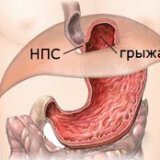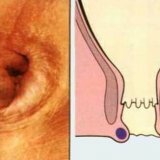Causes of a hernia of the stomach

In modern medicine, several varieties of a hernia of the stomach have been identified. They are external, that is, the exit of the abdominal cavity organs occurs, together with the peritoneum through the "weak points" of the abdominal wall, as well as the internal ones, that is, the exit of the organs of the abdominal cavity passes through the diaphragm right into the thoracic cavity.
Treatment of this type of disease in all cases mainly requires the intervention of surgeons. However, there are cases when the gastric hernia has been cured due to folk medicine.
The internal hernia of the stomach is also called a hernia of the esophagus. Hernias of the esophagus is the exit of the abdominal organs through the diaphragm directly into the breast cavity. Internal and external hernias of the esophagus can be both acquired and congenital.
The main causes of the appearance of the hernia of the stomach
The main causes of the appearance of the internal hernia of the stomach, or, in other words, hernia of the esophagus of the acquired species, become age-related degenerative changes in the human body. Quite often, this kind of hernia of the stomach is accompanied by intra-abdominal pressure. In addition, the same pressure can also be caused, because intra-abdominal pressure appears as a result of chronic constipation, gastric gas, lifting various weights, blunt abdominal injuries. In addition to all of the above, a stomach hernia can manifest as a consequence of poor stomach performance, as well as bloating.
Also, the weakness of the connective tissue of the peritoneum wall is related to the causes of the appearance of hernia of the stomach. With age, all tissues of the human body undergo a number of changes. Changes in age in the connective tissue are characterized by its biomechanical weakening. If at a young age a person could lift weights, perform heavy physical work and another without negative results for the body, then with age such actions can become the causes of the appearance of a hernia. Whether it is necessary to speak about lifting of gravity when even harmless tussis, simple sneezing and straining can promote occurrence of a hernial disease.
Other causes of the appearance of a hernia of the stomach
Hernias always appear in the anatomically weak areas of the peritoneum: the groin area, umbilical ring, femoral canal, white abdominal line and others. This also includes various defects of the abdominal wall, which have arisen after surgery or abdominal injuries. In this case, the hernia is formed over time and unnoticed for the patient, without any physical exertion or significant stress. In their appearance, the weakness of the connective tissue of the peritoneal wall is to blame.
There are also common factors that lead to the process of weakening the abdominal wall: heredity, flabbiness with age, weight loss by starvation or disease, obesity, stretching of the abdominal wall during pregnancy, ascites and others.
Factors contributing to the development of a hernia are those that lead to an increase in intra-abdominal pressure: work that involves lifting and moving weights, intense sports activities, multiple or complicated births, chronic constipation.



